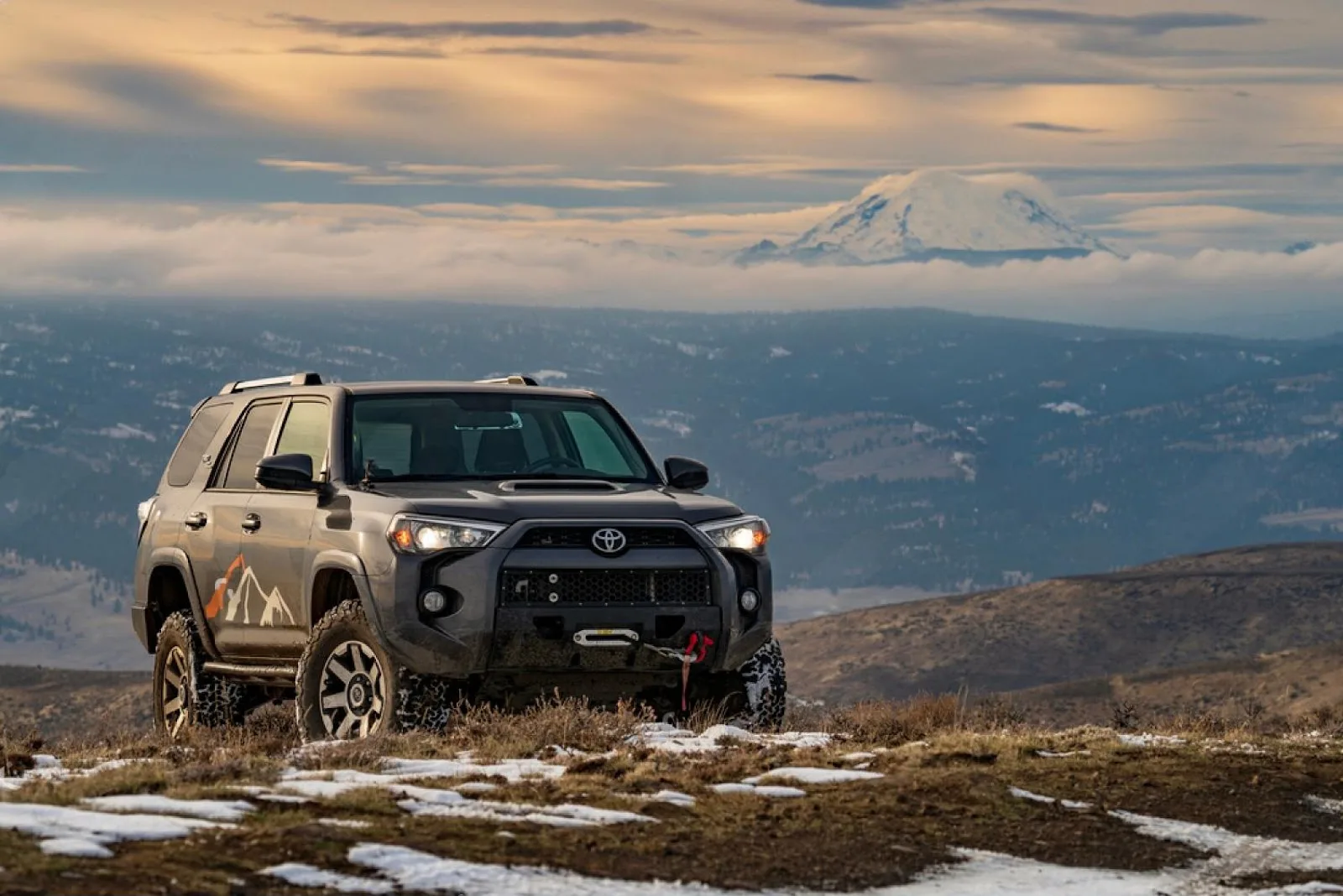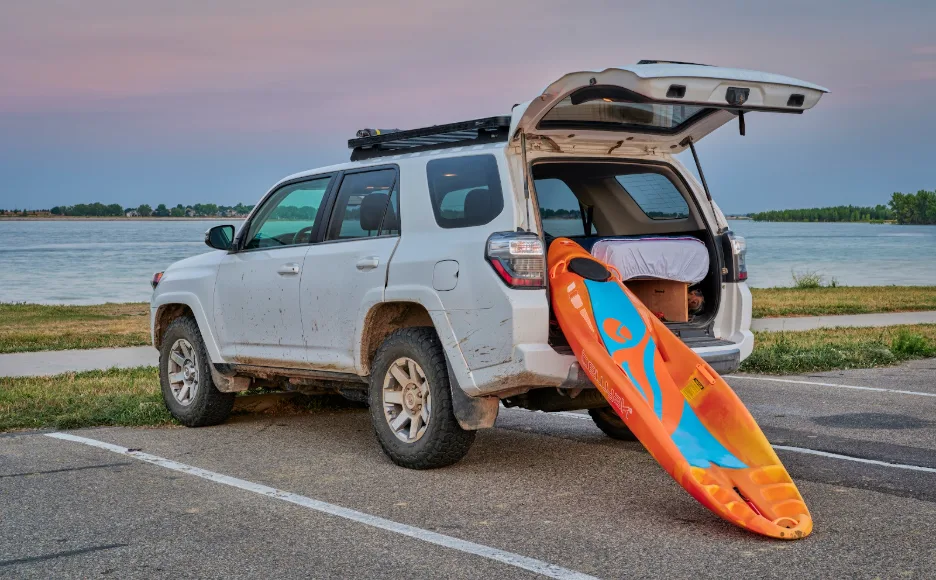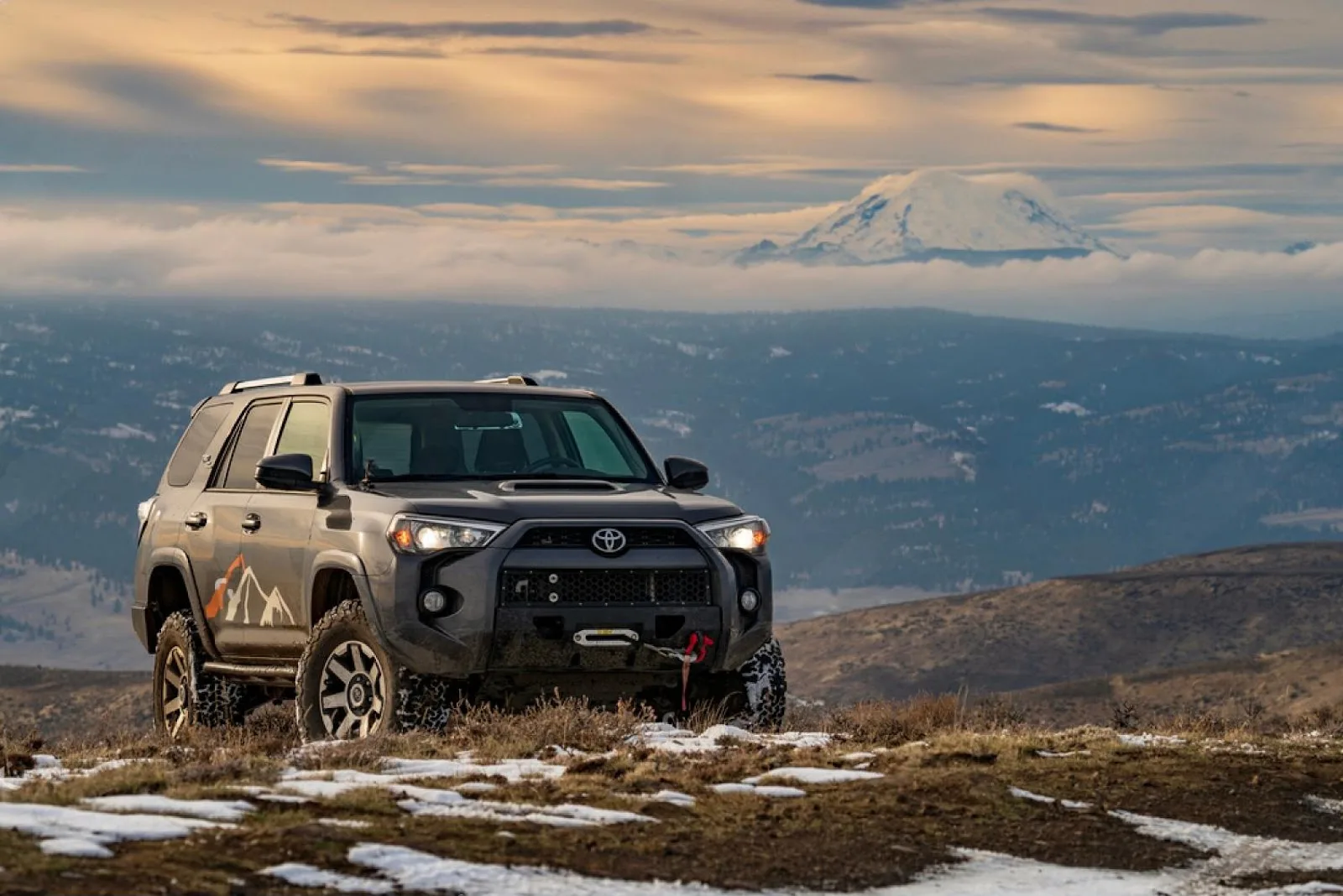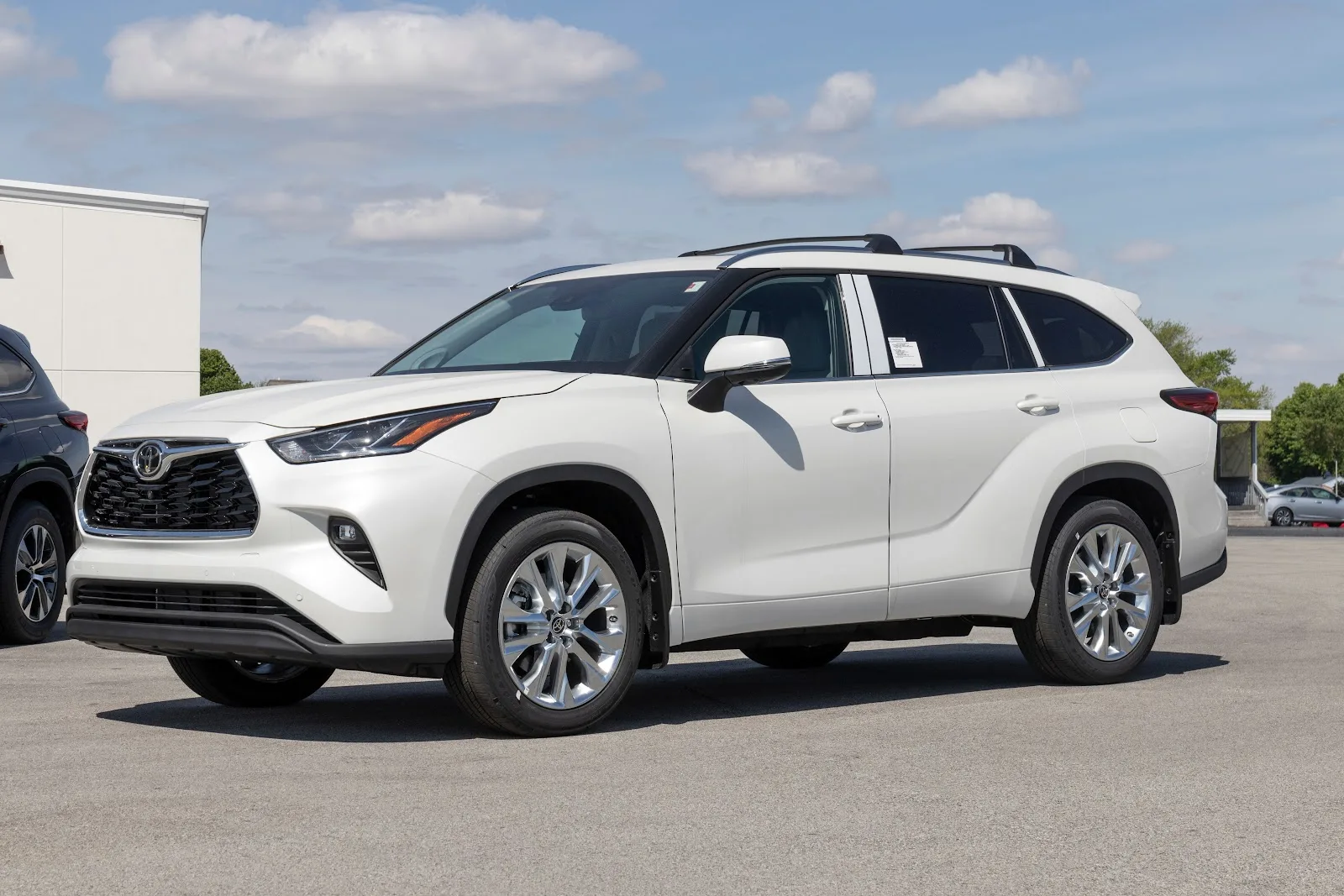
Toyota 4Runner for Sale: Buying Guide to Finding Your Perfect Off-Road SUV
Searching for a used 4runner for sale? Well, here is your guide to finding a perfect used 4runner for your next off-road trip. So, let us get into it!
The Robust Popularity of Toyota 4Runner
According to available data from Overland Junction, there are approximately over 1 million Toyota 4Runners currently on the roads in the United States. The exact number is hard to determine, but that’s a lot of 4Runners no matter how you look at it.
Overview of the Toyota 4Runner and Reasons for Its Popularity
So, what is it about the 4Runner that makes it so popular? The fact that it’s a 4WD SUV and a Toyota go hand in hand to help seal its popularity. The most current models are still truck-based rather than car crossovers, like some competitors, and they are marketed to appeal to family-oriented buyers with a penchant for adventure.
The Appeal of the 4Runner and Its Market Status
Sales of the fifth generation, and there’s no reason to think the sixth generation will be any different, reflect the 50-something buyer with an average income in the $110,000 range.
The 4Runner sales remain steady with young, wealthy families. Jeep’s Wrangler still maintains a strong market presence, slightly ahead of the 4Runner, though it’s suffering a slight decline in sales. According to American Cars and Racing, the Ford Bronco, despite its recent re-introduction and initial popularity, has faced sales challenges, as evidenced by the 14% decrease in the first half of 2024. Perhaps the novelty of the Bronco is wearing off. That, and it lacks the old-school styling that made the Bronco awesome in its day.
With the introduction of the sixth generation, expect the 4Runner to surpass Wrangler sales. The hybrid i-FORCE engine is giving Car and Driver reviewers something to talk about when it comes to more power and more torque than the non-hybrid versions.
Key Points That Buyers Should Know
We wrote this 4Runner Buyer Guide to help you navigate through the years and models.
Overview of 4Runner Generations and Their Evolution
The 4Runner has been on the road since 1983, and with the 2025 model, it is now in its sixth generation. While primarily a U.S. vehicle, it is still built in Japan but is not available for sale there since Toyota has focused on the Prado in that market. See the details about Toyota 4Runner’s generations and their evolution.
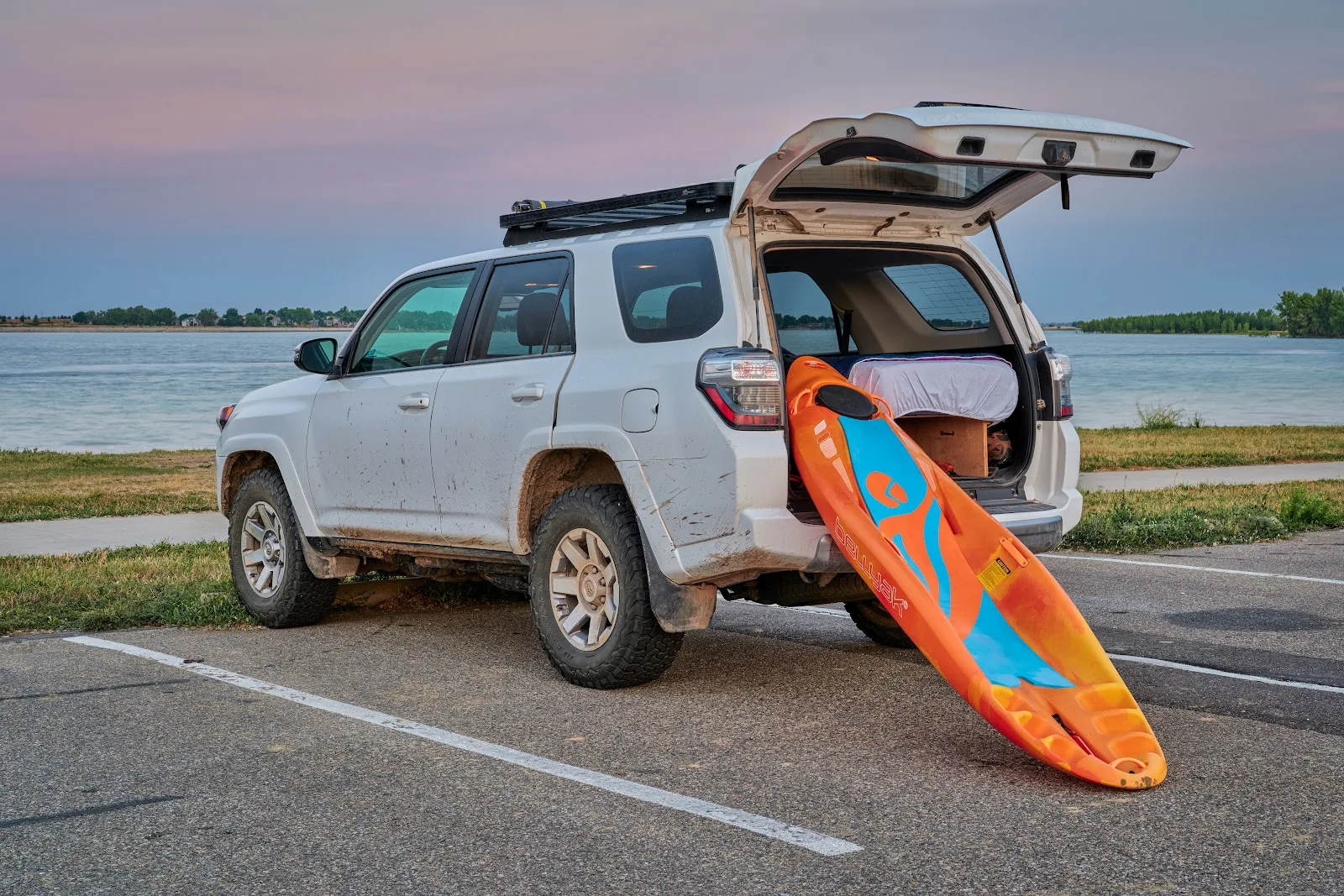
A Brief History: The Evolution of the 4Runner from Its Inception to the Present
The 4Runner, now over 40 years old, started as a compact SUV before transitioning to a mid-sized vehicle. The first generation was shipped to the U.S. without rear seats to reduce customs duties because they were classified as light-duty trucks. The 2025 model revisits some of the original design elements but is now a more upscale vehicle, attracting high-profile owners like Kevin Eubanks, former band leader of The Tonight Show with Jay Leno.
Major Changes and Background for Each Generation
Like all Toyota vehicles, each generation is the springboard of change to the next. Here are some of the major changes from generation to generation:
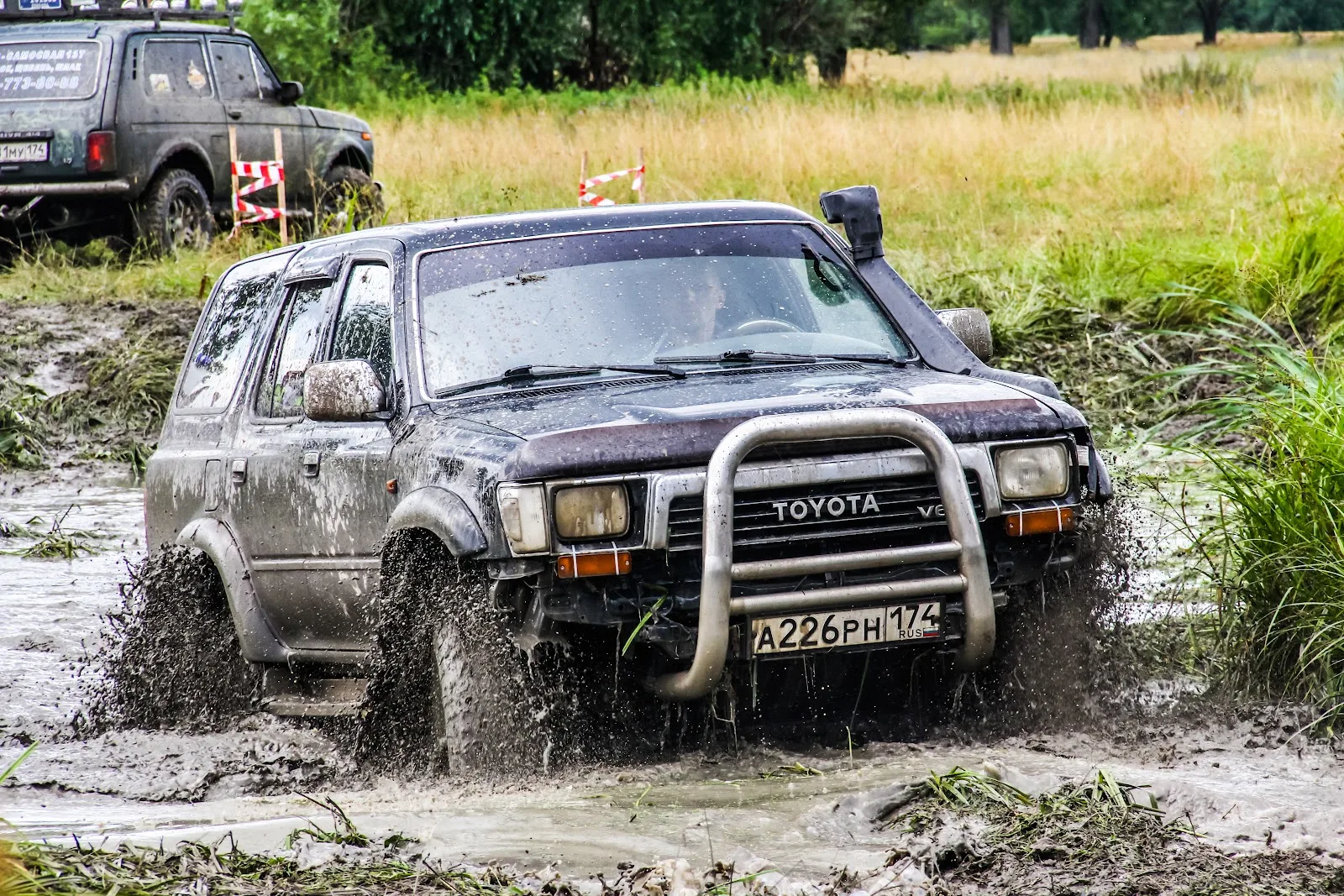
First Generation Toyota 4Runner (1984–1989)
Launched in 1984, the first-generation Toyota 4Runner transformed the rugged Hilux pickup into a versatile SUV, combining durability with everyday usability. Its removable fiberglass cabin and reliable 2.4L 22R-E engine with 116 horsepower made it popular with outdoor enthusiasts. With high ground clearance, optional four-wheel drive, and a strong suspension, it quickly became known for off-road excellence.
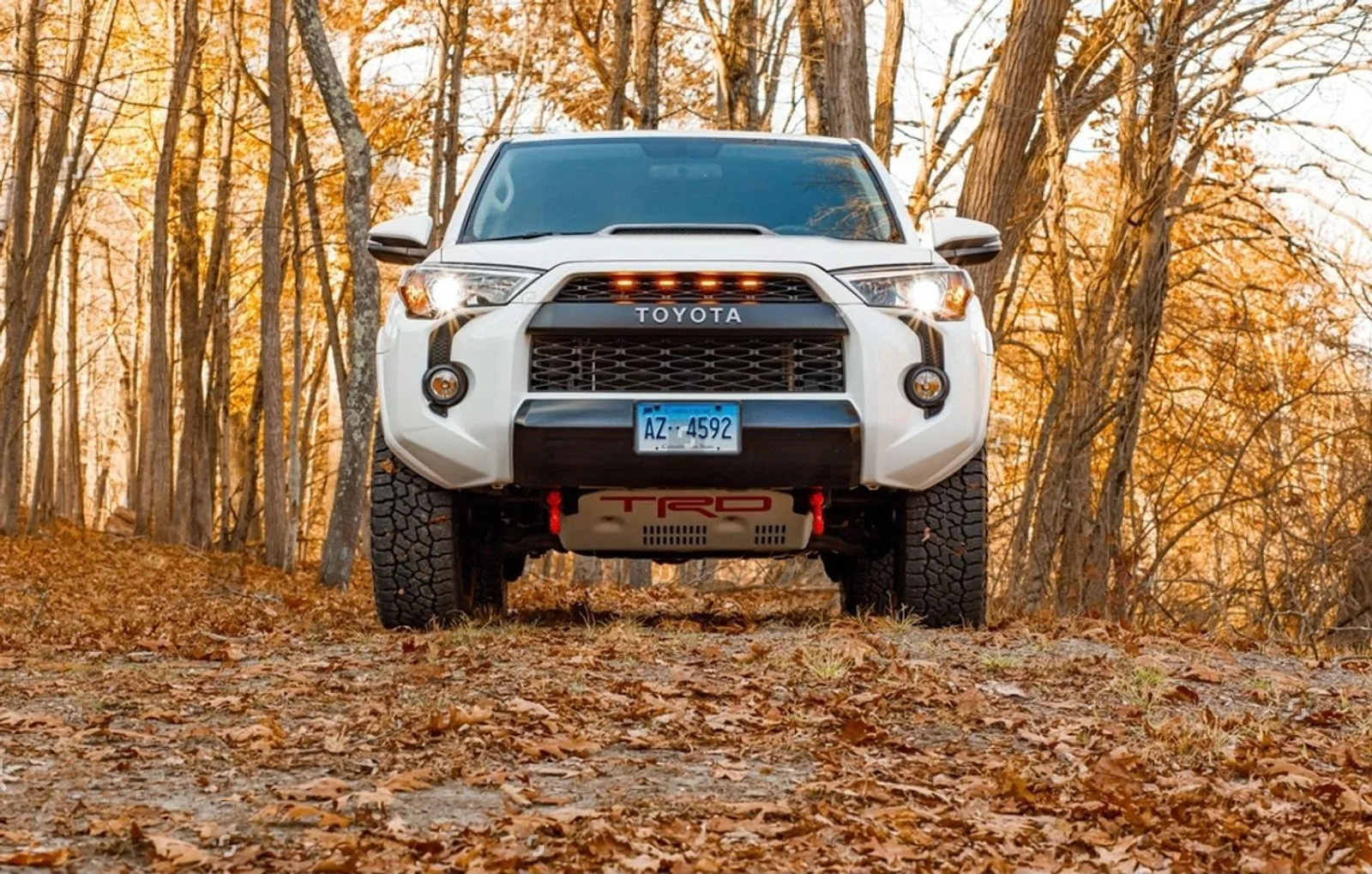
Second Generation Toyota 4Runner (1990–1995)
Launched in 1990, the second-generation Toyota 4Runner added family-friendly features to its rugged design, including a full metal roof for safety and a new four-door model. Engine options included a 2.4L four-cylinder and a 3.0L V6, though the latter was criticized for being underpowered. Suspension upgrades improved comfort and rough terrain handling, making the 4Runner a more versatile and refined SUV.
Third Generation Toyota 4Runner (1996–2002)
The third-generation Toyota 4Runner became a versatile midsize SUV, combining toughness with refinement. It offered a more comfortable interior, upgraded materials, and safety features like airbags and ABS, appealing to family and premium buyers. Engine options included a 2.7L I4 and a 3.4L V6, and with more cabin space and improved comfort, it solidified the 4Runner’s reputation as a versatile SUV.
Fourth Generation Toyota 4Runner (2003–2009)
The fourth-generation Toyota 4Runner blended upscale design with 4WD capability. It offered powerful V6 and V8 engines for enhanced performance and towing, plus optional third-row seating for families. A double wishbone suspension improved comfort and agility, while increased cargo space and versatile interiors balanced utility and versatility, solidifying its reputation as a dependable SUV.
Key Differences Between Gen 5 (2024) and Gen 6 (2025) Models
Key Differences Between 5th Gen (2010–2024) and 6th Gen (2025+) Toyota 4Runner
| Feature | 5th Gen (2010–2024) | 6th Gen (2025+) |
|---|---|---|
| Platform | Built on the Toyota N280 platform. | Based on Toyota’s TNGA-F platform for improved strength and functionality. |
| Powertrain | 4.0L V6 engine, 5-speed automatic transmission, and no hybrid option. | The optional hybrid i-FORCE MAX powertrain with improved torque and fuel efficiency. |
| Off-Road Technology | CRAWL Control, Multi-Terrain Select. | Enhanced Multi-Terrain Select, refined CRAWL Control, and the introduction of SDM. |
| Suspension | Solid rear axle with coil springs and KDSS on certain trims. | Multi-link rear suspension with improved articulation and ride comfort. |
| Interior and Tech | Basic technology with optional upgrades (pre-2020 models lacked Apple CarPlay). | Includes innovative high-tech like Apple CarPlay, Toyota Safety Sense, a larger touchscreen, and a 4WD digital display with real-time data. |
| Design | Traditional, boxy SUV design with a focus on utility. | More modern and refined, adopting design elements from the Tacoma, Tundra, and Land Cruiser. |
| Fuel Efficiency | Lower fuel economy (17 MPG city, 20 MPG highway). | Improved fuel efficiency, especially with the hybrid powertrain option: (19/25) i-FORCE, and (23/24) i-FORCE MAX. |
| Off-Road Features | Known for rugged 4WD features, including optional locking differentials and skid plates on TRD trims. | Enhanced off-road abilities with improved traction, skid plates, and stronger hybrid overlanding performance. The Trailhunter features ARB’s Old Man Emu suspension. |
Engine and Powertrain Options: Comparing the Reliable Gen 5 with the Advanced Turbo and Hybrid Options in Gen 6
| Model | Engine | Horsepower | Torque (lb-ft) |
|---|---|---|---|
| Gen 5 All Models | 4.0L V6 5-speed AT | 270 | 278 |
| Gen 6 Standard | 2.4L Turbo 8-speed AT | 278 | 317 |
| Gen 6 Optional & Standard in Some Models | 2.4L Turbo Hybrid 8-speed AT | 326 | 465 |
Interior and Technological Advancements: Key Upgrades in Gen 6 with Modern Design and Latest Technology
The sixth-generation Toyota 4Runner introduces several upgrades that revolutionize the interior and bring this generation into the 2020s. Here are a few of the key upgrades:
Modernized Cabin Layout
The redesigned dashboard is sleeker and more ergonomic, with premium materials like soft-touch surfaces, leather accents, and contrast stitching in higher trims adding a luxury feel.
Larger Infotainment Display
A standard 8-inch touchscreen, upgradeable to a 14-inch display on higher trims, is positioned for improved visibility and accessibility.
Enhanced Seating Options
Available features include heated and ventilated front seats, power lumbar support with memory settings on higher trims, and optional third-row seating.
Ambient Lighting
Higher trim levels let you adjust the interior lighting to create a personalized atmosphere.
Connectivity
Wireless Apple CarPlay® and Android Auto™ are now available.
OTA Updates
Seamless updates to the infotainment and vehicle systems without requiring a service visit.
Smart Assistant Integration
Say “Hey Toyota” to adjust navigation, entertainment, or climate settings.
Other Upgrades Include:
- Toyota Safety Sense 3.0
- 360-Degree Camera System
- Head-Up Display
- Digital Rearview Mirror
- Panoramic View Monitor
- Smart Key and Digital Key
- Wireless Charging
- Premium Audio
- 4-Zone Climate Control
Trim Levels and Special Editions: New Trims and Special Editions Added in Gen 6
The 2025 4Runner expands its lineup to nine grades, introducing the first-ever Trailhunter and Platinum editions:
- SR5
- TRD Sport
- TRD Sport Premium
- TRD Off-Road
- TRD Off-Road Premium
- Limited
- Platinum
- TRD Pro
- Trailhunter
So far, there have not been any special edition announcements, but the exclusive color for the 2025 TRD Pro is Mudbath—a fitting color choice for an off-road legend.
Previous Special Editions of the Toyota 4Runner
40th Anniversary Special Edition (2023)
Limited to 4,040 units, this model featured retro-inspired heritage graphics with yellow, orange, and red stripes, bronze 17-inch wheels, black badging, a 40th Anniversary logo, special interior stitching, and commemorative plaques.
Venture Edition (2020)
Equipped with a Yakima MegaWarrior roof rack, blacked-out exterior accents, and standard part-time 4WD.
Nightshade Edition (2019–2022)
A luxury-focused special edition with dark aesthetics, including blacked-out chrome accents on the grille, bumpers, and door handles, black 20-inch wheels, and a leather-trimmed interior.
Trail Special Edition (2021)
Designed for outdoor enthusiasts, this edition includes a custom cooler, sliding cargo tray, Yakima LoadWarrior roof rack, unique upholstery with orange stitching, and all-weather mats.
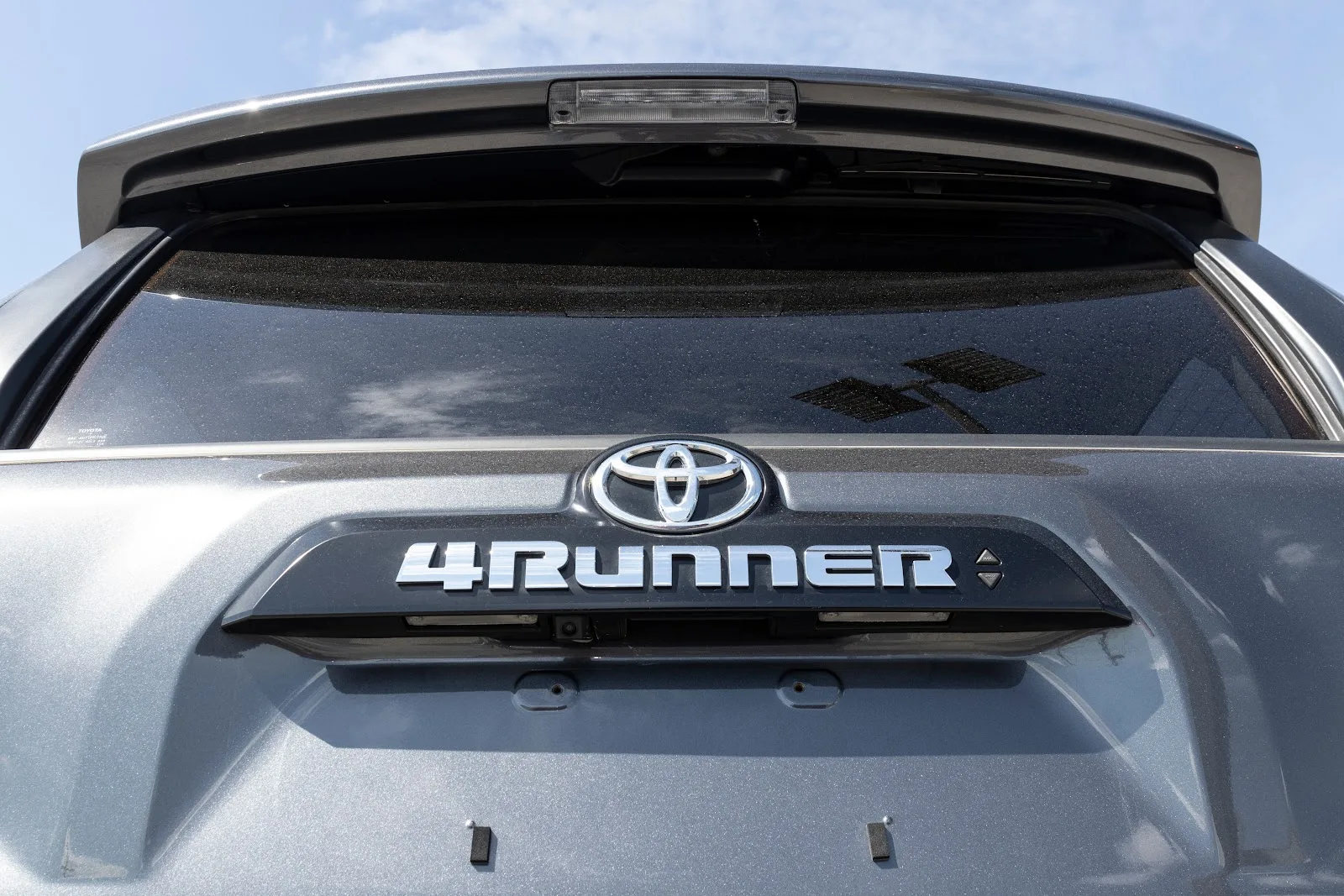
Pros and Cons of Buying New vs. Used Toyota 4Runner
Like all vehicles, there are pros and cons to buying used over new, but with the 4Runner, there can be a big difference in equipment like the latest navigation and connectivity features versus winging it in the dirt without a 360-degree camera.
Buying New
Pros:
- Current technology and features
- Manufacturer warranty
- Choose your trim level
- Lower interest rates on financing
- Lower maintenance
Cons:
- Higher price
- Depreciation
- Higher insurance costs
- Popular models have long wait times
Buying Used
Pros:
- A lower sale price means you can afford a higher trim level
- Slower depreciation
- Lower insurance premiums
- Certified Pre-Owned warranty may be available
Cons:
- Higher maintenance and repairs
- Limited modern tech and features
- Possible unknown vehicle history
- Higher APR on used car loans
Advantages of a New Model (2025): Latest Technologies, Performance, and Off-Road Capabilities
Advanced Technology
Includes 14-inch touchscreen on higher trims, wireless connectivity, 12.3-inch digital driver display, wireless charging ports, OTA updates, and Toyota Safety Sense 3.0 (TSS 3.0).
Toyota Safety Sense 3.0 (TSS 3.0)
Includes cutting-edge driver-assistance features such as:
- Pre-Collision System with Pedestrian Detection
- Lane Departure Alert with Steering Assist
- Adaptive Cruise Control
- Lane Tracing Assist
- Road Sign Assist
360-Degree Camera System with Multi-Terrain Monitor
New Powertrain Options
- i-FORCE 2.4L Turbocharged 4-Cylinder: 278 hp and 317 lb-ft of torque – more efficient and powerful than the old V6.
- i-FORCE MAX Hybrid: Combines the 2.4L turbo engine with an electric motor for a total of 326 hp and 465 lb-ft of torque.
- 8-Speed Automatic Transmission: Smoother and more responsive than the outdated 5-speed automatic in the previous generation.
Off-Road Capabilities
TRD Pro and Trailhunter trims feature upgraded components, including:
- ARB’s Old Man Emu 2.5-inch shocks for superior suspension performance.
- High-strength skid plates for better underbody protection.
- 33-inch all-terrain tires for improved traction.
- Multi-Terrain Select and CRAWL Control: Enhanced versions of these features allow for better grip, control, and driver confidence on challenging terrain.
- Increased Ground Clearance and Approach/Departure Angles: Optimized for better rock crawling, water fording, and general all-terrain performance.
- Full-Time 4WD (Hybrid Models): Improved 4WD systems ensure maximum traction, even in extreme conditions.
- Multi-Terrain Monitor (MTM): Offers live camera views of the terrain under and around the vehicle, enhancing driver awareness on trails.
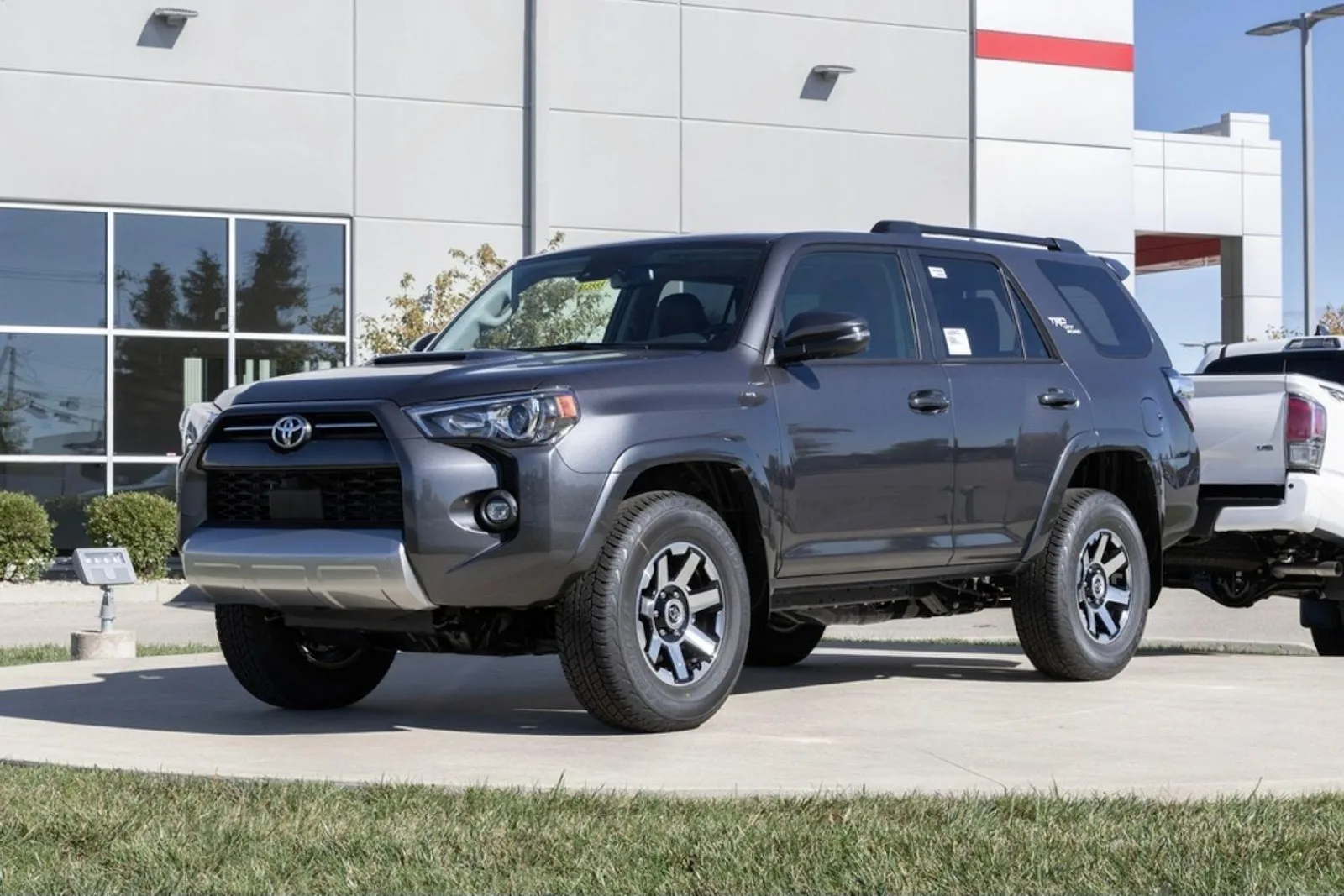
Benefits of a Used Model (2010-2024): Cost Efficiency and Established Reliability
A used 2010–2024 Toyota 4Runner is a reliable, budget-friendly SUV. Its durable 4.0L V6 engine and body-on-frame design ensure longevity, while trekking features like Multi-Terrain Select and CRAWL Control enhance 4WD functionality.
What to see for Long-Term Ownership: Resale value and durability
This generation Toyota 4Runner is built for long-term ownership, with the V6 often lasting over 250,000 miles. Simple mechanics and low annual maintenance costs of $500–$600 reduce repair expenses. Retaining 60–70% of its value after five years, especially in TRD Pro trims, it’s a value-packed SUV for trails and daily driving.
How to Choose the Right 4Runner Trim Level for Your Needs
Choosing the right Toyota 4Runner depends on your specific needs, budget, and intended use. Here’s a guide to help you pick the best model or trim:
| Key Purpose | Trims | Description |
|---|---|---|
| Daily Driving & Family Use | SR5 | Affordable, practical, reliable, and equipped with standard equipment for comfort. |
| Limited | Adds luxury with leather upholstery, premium audio, and X-REAS suspension for a smoother ride. | |
| Off-Road Enthusiast | TRD Off-Road | Great value with features like CRAWL Control, Multi-Terrain Select, and a locking rear differential. |
| TRD Pro | Top-tier 4WD performance with FOX® shocks, skid plates, and all-terrain tires. | |
| Overlanding & Adventure Travel | Trailhunter (6th Gen) | Overland-ready with ARB’s Old Man Emu suspension, skid plates, and 33-inch tires. |
| TRD Pro (5th Gen) | Reliable and capable of extended explorations. | |
| Luxury & Comfort | Limited | Premium features such as leather-trimmed seating, dual-zone climate control, and refined suspension. |
| Platinum (6th Gen) | Adds high-end touches like heated rear seats and a head-up display. |
Characteristics and Uses of Each Gen 6 Trim Level
| Trim Level | Characteristics | Uses |
|---|---|---|
| SR5 | Base trim with solid overland functionality. Powered by 4.0L V6. 17-inch alloy wheels, 6.1-inch touchscreen, Toyota Safety Sense. | Ideal for daily driving, light off-roading, and family use. |
| TRD Sport | Sportier styling and enhanced on-road handling. Sport-tuned suspension, 20-inch wheels, 8-inch touchscreen. | Best for on-road driving with occasional light off-roading or trail driving. |
| TRD Sport Premium | Similar to TRD Sport but with leather upholstery, power-adjustable driver’s seat, and dual-zone climate control. | Combination of sportiness, comfort, and utility, with some outdoor trekking capabilities for weekend escapes. |
| TRD Off-Road | Built for serious off-roading: CRAWL Control, Multi-Terrain Select, locking rear differential, 17-inch wheels, skid plates. | Perfect for adventure enthusiasts wanting serious 4WD performance with daily use practicality. |
| TRD Off-Road Premium | TRD Off-Road features with added luxury like leather upholstery, power-adjustable seats, and an upgraded infotainment system. | Ideal for serious off-roaders who want luxury and comfort for long trips. |
| Limited | Luxurious features: moonroof, 20-inch wheels, ventilated seats, premium JBL audio system, refined interior materials. | Best for those who want comfort, family-friendly features, and occasional light off-roading. |
| Platinum | Top-tier luxury: panoramic sunroof, ventilated seats, premium audio, parking sensors, modern electronics. | Ideal for luxury seekers who need a comfortable ride with light trail ability. |
| TRD Pro | Most off-road-ready: FOX shocks, skid plates, 17-inch TRD wheels, LED fog lights, and TRD Pro grille. | Designed for hardcore trail drivers who need a vehicle capable of handling tough trails and daily comfort. |
| Trailhunter | Rugged, dirt-focused, likely with overlanding accessories like a built-in fridge, and extra storage. | Great for overlanders and remote high country trips, offering comfort and ability for extended outings. |
Recommendations Based on Purpose: Off-Road, Family Use, and Daily Driving
When it comes to daily driving, the SR5 is an outstanding choice. It’s equipped with the latest safety technology and built for highway use. Likewise, the TRD Sport is good for on-road driving. Both of these models are well-equipped for the occasional cross-country venture, so you don’t have to worry about getting around in the dirt.
Serious trail hunters will want to jump behind the wheel of the TRD Pro or the Trailhunter. These two models are the most trail-ready vehicles in the 4Runner lineup with their Fox® shocks, skid plates, and in the case of the Trailhunter, an OME suspension. In addition, all of these models are family-friendly with their SUV body and selection of seating between 5 and 7.
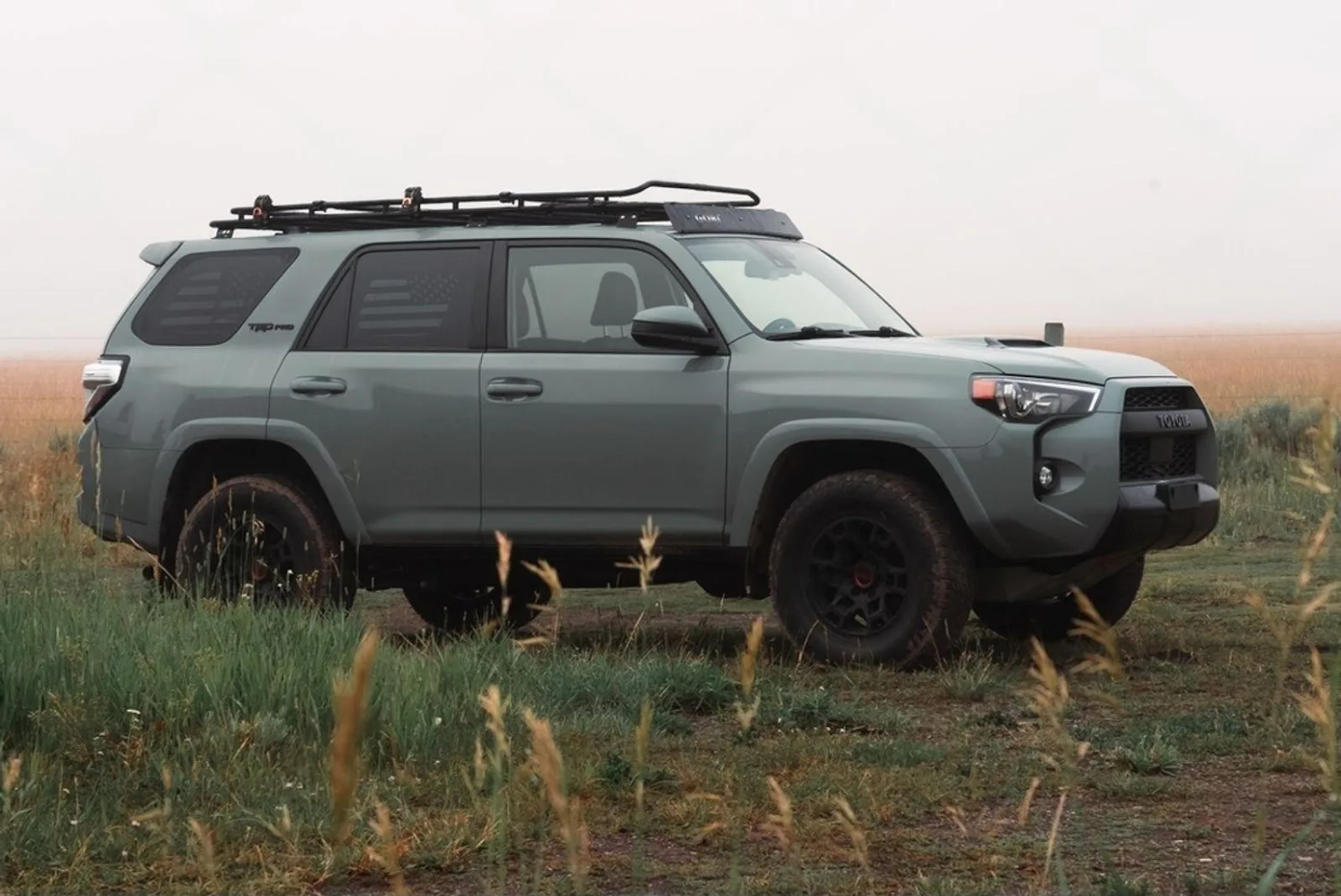
The Appeal of Special Editions and How to Choose a Limited Trim
Special editions offer unique styling and are of limited production. They also may have added features like off-road equipment or color schemes that aren’t found on the regular trim levels. All of these things appeal to owners who like to stand out from the crowd, and sometimes, the prices are reasonable.
When choosing a limited trim 4Runner, it’s like choosing any other model. Weigh the advantages of having a luxurious ride over trail-worthy 4WD equipment, consider how you will be driving it, and ask yourself which high-tech features you want from your ride. The upside to buying a special edition is that there is a possibility that it will retain its value. In 2024, the 2023 40th Anniversary Special Edition was ranked 6th on the KBB Best Resale Value Top 10 List.
Used 4Runner Market Prices by Generation
When choosing a generation and model, it’s helpful to consider the market value of existing 4Runners. Here are some statistics according to Carmax:
Breaking down the pricing by generation helps us see which generation is sought out by 4WD enthusiasts.
1st Generation (1984-1989): High Market Value as a Rare Classic Model
The 1st Generation Toyota 4Runner has seen a significant rise in value, solidifying its place as a sought-after classic SUV. Here’s an overview of current pricing trends:
Average Market Values
Good Condition
Prices average around $17,367, ranging from $5,863 for fixer-uppers to $30,000 for pristine examples.
Excellent Condition
Top models can reach $21,100 or more, depending on rarity and originality.
Recent Sales Highlights
- A 1986 SR5 Turbo 4×4 5-Speed sold for $27,500 (October 2024).
- A 1988 SR5 V6 4×4 5-Speed with 81k miles fetched $35,000 (June 2024).
The growing demand for vintage SUVs, coupled with limited availability, has led to a 30% increase in prices in recent years. As interest in these vehicles rises, buyers should focus on condition, mileage, and originality to secure a well-preserved example in a competitive market.
2nd Generation (1990-1995): More Affordable Pricing Compared to the Previous Generation
The 2nd Generation Toyota 4Runner has gained popularity among collectors and enthusiasts, driving up its market value. Here’s a breakdown of pricing trends:
Average Market Values
The average price is approximately $12,590, with variations based on condition, mileage, and originality.
Recent Sales Highlights
- A 1993 SR5 V6 4WD 5-Speed with 161k miles sold for $10,050 in January 2024.
- Another 1993 SR5 V6 4WD 5-Speed with 240k miles sold for $10,250 in April 2023.
Limited production variants or unique features can increase value. As interest in vintage SUVs grows, prices for 2nd Gen 4Runners have risen, typically ranging between $10,000 and $15,000 for standard models, with exceptional examples commanding more.
3rd Generation (1996-2002): Mid-Range Pricing as a Popular Off-Road SUV
Here’s an overview of current pricing trends of the 3rd Generation:
Average Market Values
The average price is around $15,469, with variations based on condition, mileage, and modifications.
Recent Sales Highlights
- A 2001 SR5 4WD with 55,000 miles sold for $29,000 in December 2024.
- A 1997 Limited 4WD with 53,000 miles sold for $35,000 in December 2024.
4th Generation (2003-2009): High Demand as a Semi-Luxury SUV
Here’s a snapshot of the current pricing trends of the 4th Generation:
Average Market Values
Prices generally range from $5,000 to $15,000, depending on condition, mileage, and trim level. Well-maintained, low-mileage models, especially higher trims like the Limited, can reach the upper end or exceed this range.
Recent Sales Highlights
- A 2003 Limited Edition with just 21,000 miles listed for $16,995.
- A 2005 SR5 with 150,000 miles listed for $8,500.
If you’re looking for a 4th Gen 4Runner, expect prices between $5,000 and $15,000, with standout examples priced higher. Always inspect the vehicle thoroughly and verify its history for a confident purchase.
5th Generation (2010-2024): High Resale Value with the Latest Safety Technologies
The 5th Generation Toyota 4Runner remains a top choice in the used SUV market, celebrated for its endurance and dirt capabilities as you can see from owners on the 4Runner forum in this article comparing Toyota 4Runner Gen 5 vs Gen 6. Here’s an overview of current pricing trends:
Average Market Values
Prices average around $41,284, with variations based on model year, mileage, condition, and trim level.
Recent Listings
- A 2021 SR5 with 48,641 miles highlights the availability of newer models with moderate mileage.
- A 2014 SR5 Premium shows that older models are still present and in demand.
Things to Look Out for in Each 4Runner Model
Like all vehicles, some 4Runner models and years have quirks. We’ve compiled a list of things to watch for when shopping, and forums and owner groups are great for identifying potential issues and solutions, so seek out more information from owners before you put your money down.
1st Gen Engine Problems (22R/22RE – 2.4L Inline-4)
Head Gasket Failures
The 22RE is reliable but prone to head gasket failures, particularly with overheating. Symptoms include white exhaust smoke, coolant loss, and engine overheating. To fix it, replace head gaskets and check for warped heads.
Timing Chain Wear
The timing chain guides (especially the plastic ones) wear out over time, causing the chain to rattle against the timing cover. If ignored, it can puncture the timing cover, causing coolant and oil to mix. To fix it, replace it with metal-backed guides and timing components.
Oil Leaks
Valve cover gaskets and oil pan gaskets often leak, especially on older engines. To fix it, replace the gaskets and seals during routine maintenance.
Lack of Power
The 22RE is underpowered for the 4Runner, particularly when loaded or off-road. To fix it, some owners opt for engine swaps (e.g., Toyota 3.4L V6 or 3.0L upgrades).
2nd Gen Engine Problems (3VZ-E – 3.0L V6)
Head Gasket Failure
The 3VZ-E V6 is notorious for head gasket issues due to design flaws and overheating. Symptoms include coolant leaks, overheating, and white smoke. To fix it, replace head gaskets with upgraded MLS gaskets and check for head warping.
Sludge Buildup
The 3VZ-E suffers from sludge buildup if oil changes are neglected, which can clog passages and starve components of oil. To fix it, regular oil changes and engine flushes.
Cooling System Problems
Radiator leaks, failing water pumps, and clogged passages are common, contributing to engine overheating. To fix it, replace worn cooling components and flush the system regularly.
Valve Cover Leaks
Like the 22RE, the 3VZ-E develops valve cover oil leaks over time. To fix it, replace valve cover gaskets and seals.
Timing Belt Failures
The 3VZ-E uses a timing belt, which must be replaced every 60,000–90,000 miles to avoid catastrophic engine failure. To fix it, replace on schedule and inspect tensioners.
1st and 2nd Generations: Common Engine Problems
Rust Issues
Both generations are prone to rust on the frame, body panels, and undercarriage, especially in salty climates.
To fix it: Treat rust early and apply protective coatings.
Manual Hubs and 4WD Actuation
Manual locking hubs are durable, but if neglected, they may seize or fail.
Clutch Wear (Manual Transmissions)
Worn-out clutches are common on higher-mileage vehicles, leading to slipping or difficulty shifting.
1st and 2nd Generations: Suspension Condition
The first (1984-1989) and second (1990-1995) generation Toyota 4Runner might be getting high praise from 4Runner owners, but they are not without their problems, particularly regarding suspension condition as well as the aforementioned engine issues. Below is a detailed breakdown:
Rear Leaf Spring Sag (1st Gen)
The first-gen 4Runner uses rear leaf springs which tend to sag over time, especially under heavy loads or trail use. This leads to reduced ride height, poor handling, and bottoming out over bumps.
To fix it: Upgraded or aftermarket heavy-duty leaf springs are recommended.
Worn Shocks/Struts
Both generations suffer from worn-out shocks and struts, leading to a bouncy ride, poor road holding, and uneven tire wear.
To fix it: Replace with heavy-duty or adjustable shocks for rough terrain performance.
Ball Joint Wear
The upper and lower ball joints are prone to wear, causing clunking noises, loose steering, and alignment problems. Neglecting this can lead to suspension failure.
To fix it: Regular inspections and replacement with OEM or high-quality aftermarket parts.
Tie Rod End Wear
Worn tie rods result in play in the steering and difficulty maintaining alignment.
To fix it: Replace the tie rod ends when symptoms appear, and align the vehicle afterward.
IFS Weak Points (Independent Front Suspension)
The front IFS on both generations is less robust compared to solid axle setups, leading to issues when used heavily off-road. CV joints are prone to damage, particularly when lifted or at extreme angles.
To fix it: Reinforce components and avoid excessive lifts.
3rd and 4th Generations: Rust in Transmission and Frame
The third-generation (1996–2002) and fourth-generation (2003–2009) Toyota 4Runner are not immune to certain issues. Here’s a breakdown of common problems, particularly regarding rust, transmission, and frame concerns.
3rd Generation 4Runner (1996–2002)
Severe Frame Corrosion
The third-gen 4Runner is particularly susceptible to frame rust, especially in regions with salted winter roads. Areas prone to rust include:
- Rear frame rails
- Cross members
- Suspension mounting points
To fix these: Regularly inspect and treat the frame with rust inhibitors like Fluid Film or POR-15. Severe rust may require welding or full frame replacement.
Lower Control Arm Mounts
Corrosion can eat through the lower control arm mounts, leading to failure or excessive play in the suspension.
Transmission Issues
Transmission Shifting Problems
Some third-gen 4Runners (especially with the A340F automatic transmission) experience hard or delayed shifting due to worn solenoids or dirty transmission fluid.
To fix it: Regular fluid changes and replacing faulty solenoids. If neglected, a transmission rebuild may be necessary.
Torque Converter Lock-Up Failure
Over time, the torque converter may fail to lock up, leading to poor fuel economy and slippage.
To fix it: Replace or rebuild the torque converter.
Manual Transmission (R150F) Wear
Manual transmissions can develop clutch wear or synchro grinding, especially on higher-mileage models.
To fix it: Replace worn clutches or rebuild the gearbox as needed.
General Rust and Body Issues
Rear Hatch Rust
The rear hatch, especially around the window and latch area, is prone to corrosion.
Brake Line Corrosion
Salt exposure can cause brake lines to rust, leading to potential failure.
4th Generation 4Runner (2003–2009)
Frame Rust Issues
Frame and Underbody Rust
While less severe than the third-gen, the fourth-gen still suffers from frame rust. Common areas include:
- Rear cross members
- Suspension attachment points
- Weld seams on the frame
To fix these: Apply rustproof coatings (like Fluid Film) early, and address minor rust with wire brushing and protective treatments. Severe cases may require patching or welding.
Rust on Exhaust System
The exhaust manifolds, pipes, and mufflers are prone to rust, often leading to leaks.
Transmission Issues
Transmission Shudder
Some fourth-gen 4Runners equipped with the 5-speed automatic (A750F) experience torque converter shudder or hesitation around 35-45 mph. This is often caused by degraded transmission fluid or torque converter issues.
To fix it: Perform a transmission fluid flush and use Toyota ATF WS fluid. If unresolved, a torque converter replacement may be necessary.
Transmission Cooler Failure
The transmission cooler integrated into the radiator can fail, leading to coolant mixing with transmission fluid (known as the “strawberry milkshake” problem). This can destroy the transmission.
To fix it: Replace the radiator proactively with a high-quality aftermarket unit, or install an external transmission cooler to bypass the stock cooler.
General Rust and Body Issues
Rear Hatch and Window Rust
Like the third-gen, rust tends to form around the rear window and latch mechanism.
Rust on Suspension Components
Rear trailing arms, control arms, and Panhard bars can develop surface rust, leading to weakened suspension parts over time.
To fix it: Regular cleaning and treatment with rust inhibitors.
Brake and Fuel Lines Corrosion
Brake and fuel lines are prone to rust, especially near the rear frame section.
Preventative Measures for Both Generations
Rust Protection
- Regularly wash the undercarriage, especially after exposure to salt.
- Apply undercoating (e.g., Fluid Film, Krown, or POR-15).
Transmission Maintenance
- Perform regular fluid changes every 30,000–60,000 miles.
- Use Toyota-recommended fluid.
- Monitor transmission temperature if towing or off-roading.
Frame Inspections
Check for rust regularly and address it early with sanding, painting, and protective coatings.
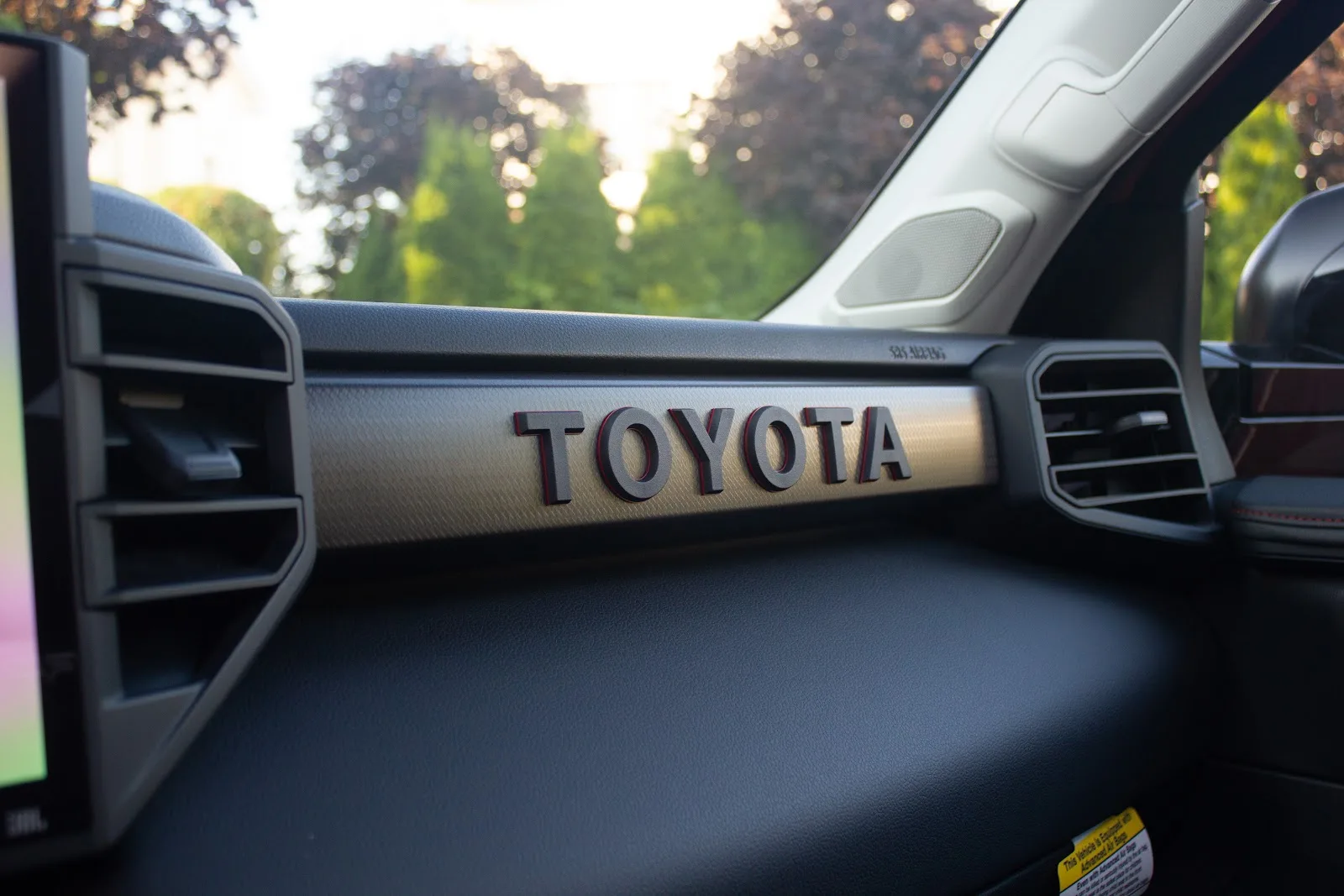
5th Generation: Electronic Systems and Infotainment
The fifth-generation Toyota 4Runner (2010–present) is widely regarded for its bulletproof V6, but it does have shortcomings, particularly with its electronic systems and infotainment. Below is a detailed breakdown of common issues:
Electronic Systems Problems
Battery Drain
Some owners report parasitic battery drain due to electronic components, such as the ECU, alarm systems, or interior lighting. This can result in dead batteries, especially in colder climates or during prolonged non-use.
To fix it: Check for faulty circuits or components causing the drain using a multimeter. Disconnect aftermarket electronics if present.
TPMS (Tire Pressure Monitoring System) Failure
The TPMS sensors in the wheels tend to fail as the batteries within the sensors wear out (usually after 5-7 years). Symptoms include inaccurate tire pressure readings or the warning light staying on.
To fix it: Replace TPMS sensors when they fail.
Key Fob/Smart Key Issues
The key fob may intermittently fail to lock/unlock the vehicle due to weak batteries or antenna issues in the receiver system. Smart key systems may also fail to detect the key nearby.
To fix it: Replace the fob battery or inspect the smart key antenna.
Backup Camera Failure
Some fifth-gen 4Runners experience backup camera failures or poor-quality images. This is often due to wiring issues or a faulty camera.
To fix it: Replace the camera or check for corroded wiring connectors.
Intermittent Power Window/Lock Problems
Power windows and door locks may malfunction due to:
- Worn window motors
- Faulty door lock actuators
- Corroded wiring in the door harness
To fix these: Replace motors, actuators, or repair damaged wiring.
Instrument Cluster Issues
Some drivers report intermittent instrument cluster glitches, such as flickering lights or failure to display proper information. This can stem from faulty wiring, connectors, or failing instrument panels.
To fix it: Replace the affected cluster or address the wiring problem.
Infotainment System Problems
Outdated and Laggy System
The stock Entune infotainment system in earlier fifth-gen models (2010–2019) is often criticized for being slow, outdated, and unresponsive. Slow boot-up times and laggy touchscreens are common.
The system lacks features like Apple CarPlay and Android Auto before the 2020 refresh.
To fix it: Owners often upgrade to aftermarket head units (e.g., Pioneer, Kenwood) that support modern connectivity features.
Bluetooth Connectivity Issues
Bluetooth pairing can be unreliable, with frequent disconnects or difficulty recognizing devices.
Audio quality can also suffer when streaming music via Bluetooth.
To fix it: Update the Entune system software or reset the system. If issues persist, aftermarket head units offer better performance.
Navigation System Problems
Toyota’s built-in navigation system is known for outdated maps with these issues:
- Slow route recalculations
- Poor user interface design
- Navigation system freezing or crashing
To fix it: Update maps via Toyota or switch to smartphone-based navigation systems using aftermarket upgrades.
Touchscreen and Display Failures
Touchscreens may become unresponsive or develop dead zones over time. Screen delamination (where the surface separates from the display) may also occur.
To fix it: Replace the head unit or touchscreen component. Upgrading to aftermarket systems is a common solution.
Audio System Quality
Base audio systems lack clarity and depth, with poor speaker quality and limited equalization options.
Higher trims with premium JBL audio systems fare better but may suffer from blown speakers over time.
To fix it: Upgrading to aftermarket speakers, amplifiers, or head units can significantly improve audio quality.
Other Electrical and Software Glitches
Blind Spot Monitor and Parking Sensors
Sensors may malfunction due to dirt, moisture intrusion, or wiring problems.
To fix it: Clean the sensors and inspect the wiring.
Steering Wheel Controls
Buttons for audio, phone, and cruise control may become unresponsive due to worn-out contacts.
To fix it: Replace the steering wheel control unit.
HVAC Control Glitches
Some owners report the air conditioning system not responding properly, with inconsistent airflow or temperature control.
To fix it: Check for faulty actuators or control units.
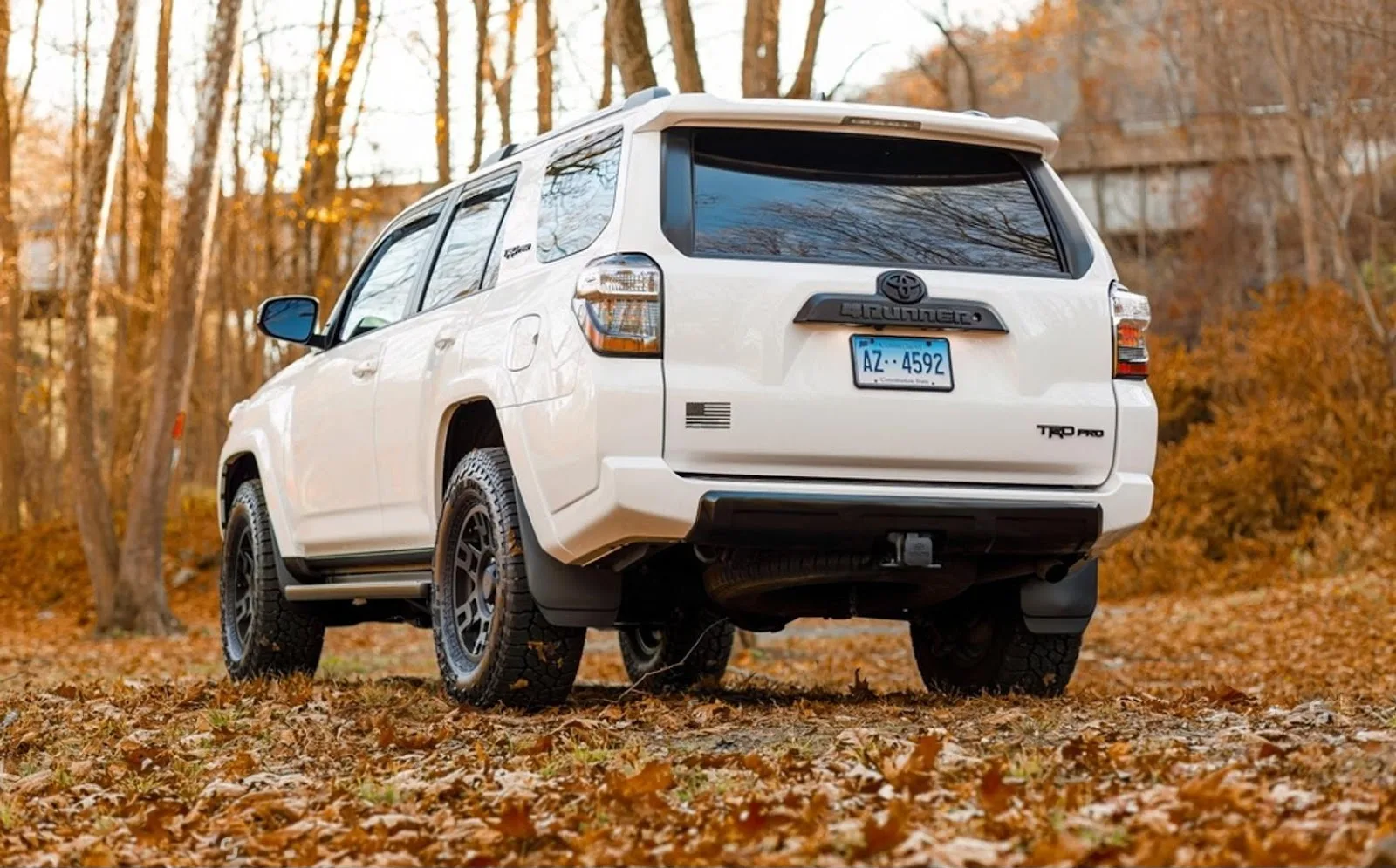
Is it Better to Buy a New 4Runner or a Used 4Runner?
It depends on your priorities. A new 4Runner offers the latest features, while a used one offers savings but may have more wear. Both new and used models ride on Toyota’s reputation for creating a reliable mode of transportation.
Price Comparison
No matter whether you’re buying new or used, it helps if you do extensive price comparison by checking online auctions, new car dealership ads, or even classified ads to get your prices. While there will always be fluctuations in prices, as you shop, you’ll find a price range that will fit your budget and needs.
Gen 6 Prices Will Be Higher, but So Will Its Resale Value
The sixth-generation Toyota 4Runner is shaping up to be one of the most exciting SUVs, combining current electronics with its rugged reputation. Hybrid options, inspired by the i-FORCE MAX system from the Tundra, offer better efficiency but push the starting price up, ranging from $40,000 to $43,000 for base trims and over $60,000 for higher trims like the TRD Pro.
Resilience is still the 4Runner’s strong suit. The move to Toyota’s TNGA-F platform makes the chassis stronger, which is perfect for towing and off-roading. With proper care, the 4Runner should easily last 300,000 miles or more, staying true to its reputation for longevity.
As for resale value, expect it to stay strong. Body-on-frame SUVs are getting rare, and the 4Runner’s blend of modern electronics and traditional reliability keeps it in high demand. Overland trims like the TRD Pro will be especially desirable and should retain value better than most other SUVs. If you’re thinking about the 6th-gen 4Runner, you’ll pay a bit more upfront, but you’re investing in a durable, tech-packed SUV that holds its value over time.
Things to Consider Upon Purchase
Impact of New Model Introduction on Price Increases and Dealer Options
The Gen 6 4Runner brings higher prices and changes to dealer options, thanks to the modern features, market trends, and high demand. Price increases in the base trims are 5-10% higher, with the premium trims bearing a much higher percentage. Inflation and competition from rivals like the Ford Bronco also contribute to the higher costs.
At launch, dealer markups will be common, especially for high-demand trims and hybrid models. Buyers may face added costs from optional packages like protection plans, off-road accessories, or tech upgrades. Negotiating or waiting a few months post-release could help avoid unnecessary expenses and secure better deals.
The introduction of the new model will also impact Gen 5 pricing. While short-term demand for the outgoing model may keep prices firm, they are likely to stabilize or drop over time. Buyers looking for a Gen 5 4Runner may find better deals once the new model is fully available.
Market Trends for Used Cars and Timing for Purchase
Used car prices remain elevated post-pandemic but are stabilizing, with durable SUVs like the Toyota 4Runner holding strong value. The best time to buy is late in the year, at the end of quarters, or during late summer when dealers offer discounts to clear inventory. Focus on reliable models, time your purchase wisely, and negotiate for the best deal.
Off-Road Performance and Daily Usage Differences
As you know, 4WD vehicles can be stiff to drive on the highways, but as Toyota evolves, it is giving this popular SUV better handling on the roads without losing its 4WD capabilities. While not as smooth a ride as the Lexus, it’s quite comfortable for long-distance driving.
Gen 5 Proven Performance: Outstanding Durability and Long-Term Track Record
The Gen 5 Toyota 4Runner has a long-term track record for its credibility and has its own diehard fans who swear by the V6. With its all-terrain components like CRAWL Control and TRD trim levels, it’s a monster on the hills and rocks. There’s no sacrifice of towing capacity, cargo room, and seating arrangements. While it lacks some of the modern tech and gets poor fuel efficiency, users covet the engine’s stability and simplicity, making it a great SUV for overlanding, family use, and some highway travel.
Gen 6 New Off-Road Technologies: Introduction of Advanced Features Like CRAWL Mode and Sway Bar Disconnect
The 6th-gen Toyota 4Runner boosts its cross-country capabilities with new features from models like the Tacoma, Tundra, and Land Cruiser. Upgrades include better Multi-Terrain Select for improved traction on mud, sand, and snow, and enhanced CRAWL Control for smoother operation. Downhill Assist Control (DAC) brings more sensors for better performance on steep descents.
It also features a full-time 4WD system with a locking center differential for constant traction and electronic locking differentials on TRD trims for better control on tough trails.
The new 4Runner has an improved suspension with SDM, which automatically disconnects sway bars for better wheel movement. A multi-link rear suspension improves trail handling and comfort. Tech upgrades include a higher-resolution Multi-Terrain Monitor with underbody views and a 4WD digital display with real-time data.
TRD trims feature tough skid plates, and the hybrid i-FORCE MAX powertrain provides more trail torque and regenerative braking for better control on tough trails.
Comparison with Other Off-Road SUVs
| Feature | 6th-Gen Toyota 4Runner | Jeep Wrangler | Ford Bronco | Land Cruiser |
|---|---|---|---|---|
| Off-Road Modes | Multi-Terrain Select, CRAWL Control, Advanced integration | Selec-Trac, Rock-Trac, Off-Road Pages | G.O.A.T. Modes, Trail Turn Assist | Multi-Terrain Select, CRAWL Control |
| Suspension | SDM, multi-link rear suspension for better articulation | Solid axles, sway bar disconnect | HOSS 3.0 with independent rear suspension | Adaptive suspension for on/off-road balance |
| Locking Differentials | Electronic front and rear lockers | Front and rear lockers on Rubicon trims | Front and rear lockers on Badlands trims | Rear locker, full-time 4WD |
| Ground Clearance | Up to 9.6 inches | Up to 10.8 inches | Up to 11.6 inches | Approx. 9 inches |
| Off-Road Cameras | 360-degree with an underbody view | Off-Road Pages with trail cameras | 360-degree with trail camera | Multi-Terrain Monitor |
| Hybrid Powertrain | i-FORCE MAX with electric torque boost | Plug-in hybrid (4xe) | Not available | Expected hybrid option |
| Skid Plates | Upgraded aluminum/composite plates | Steel plates on Rubicon | Steel plates on Badlands | Aluminum/composite plates |
| Technology and Displays | Digital off-road performance monitor, real-time data | Off-Road Pages | Trail maps and off-road data | Off-road and pitch/roll data |
| Towing Capacity | Up to 6,000 lbs | 3,500 lbs (non-4xe trims) | Up to 4,500 lbs | 8,000 lbs |
| Interior Comfort | Upgraded tech, off-road digital display | Basic comfort, focus on off-road ruggedness | State-of-the-art tech, more modern interior | Luxurious with modern electronic components |
| Full-Time 4WD | Expected with locking center differential | Part-time 4WD | Part-time 4WD | Standard |
| Approach/Departure Angles | Approx. 33°/24° (TRD Pro) | 44°/37° (Rubicon trims) | 43°/37° (Badlands trims) | Approx. 30°/25° |
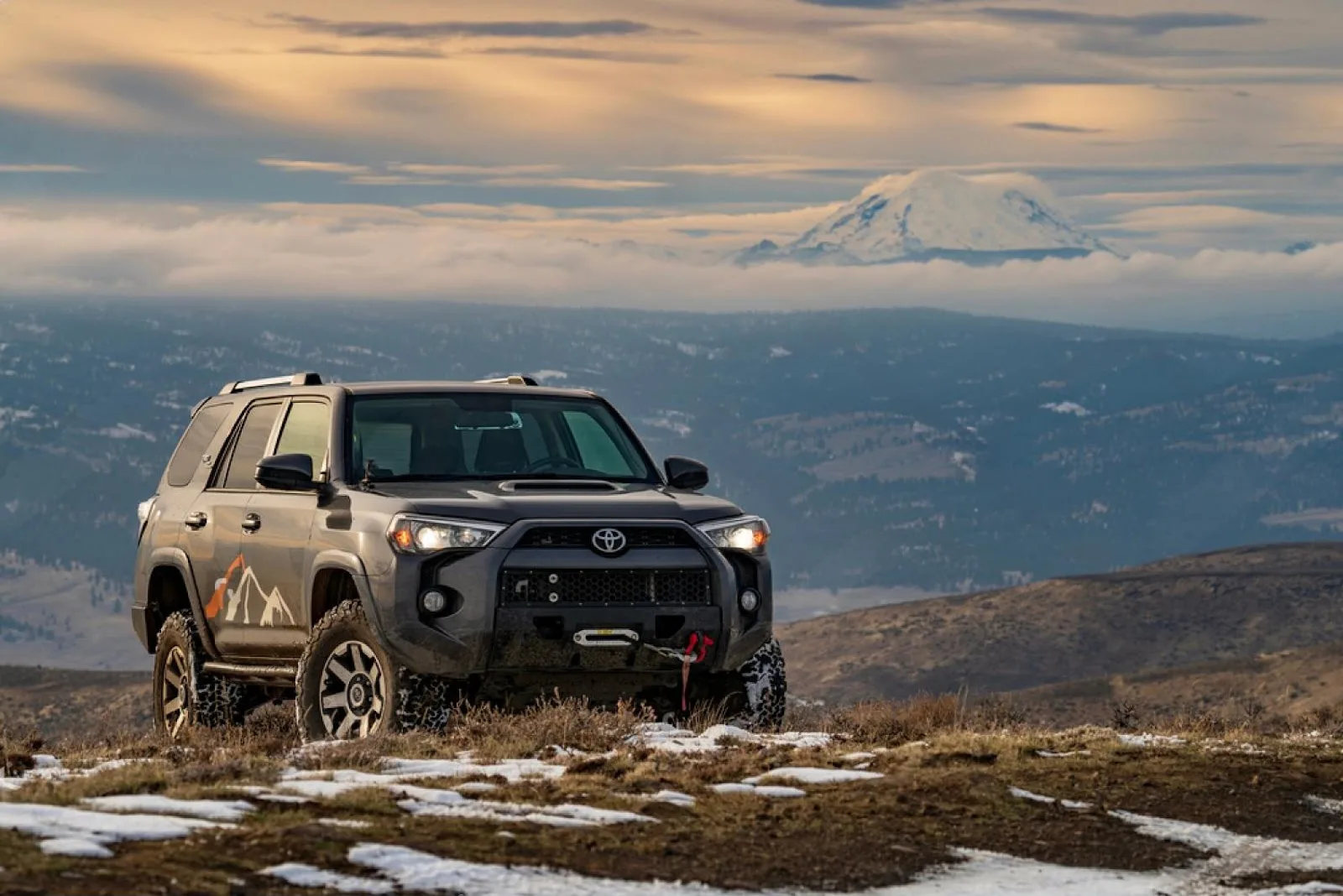
FAQs
Can I still order the 2024 4Runner?
Yes. The 2024 4Runner is still available to order by using the online vehicle builder at Toyota.com.
When is the 2025 4Runner release date?
According to the Toyota Pressroom, we can expect to see the new 2025 4Runner in the fall of 2024.
Conclusion
We hope this guide will help you find the right 4Runner for your needs. Flex carries used 4Runners in addition to their Land Cruiser and Renoca Series lineup. As the #1 Land Cruiser dealership in Japan with over 50 years of experience, Flex knows Toyotas, so if you need help, don’t hesitate to contact us with your questions. Our San Diego, CA dealership carries a large selection of vehicles, including exclusive Renoca retromod vehicles like the Tacoma Windansea.
Advice and Summary for Buying a 4Runner
While the Toyota 4Runner is a standout SUV, it is not without its drawbacks, as we’ve laid out above. Every used car will have its issues, and using this guide, you know in advance what to look for when choosing a trim and a generation. In case you’re interested, the 4Runner forums are all big fans of the Gen 5.
Reasons to Choose the Toyota 4Runner and How to Select the Ideal Model
The Toyota 4Runner is a go-to SUV for anyone who wants endurance, trail-hunting capability, and dependability in one rugged package. Whether you’re an explorer hitting the trails, someone needing a dependable family hauler, or just looking for a long-lasting ride, the 4Runner has you covered. It has Toyota on the grille, so expect great things.



